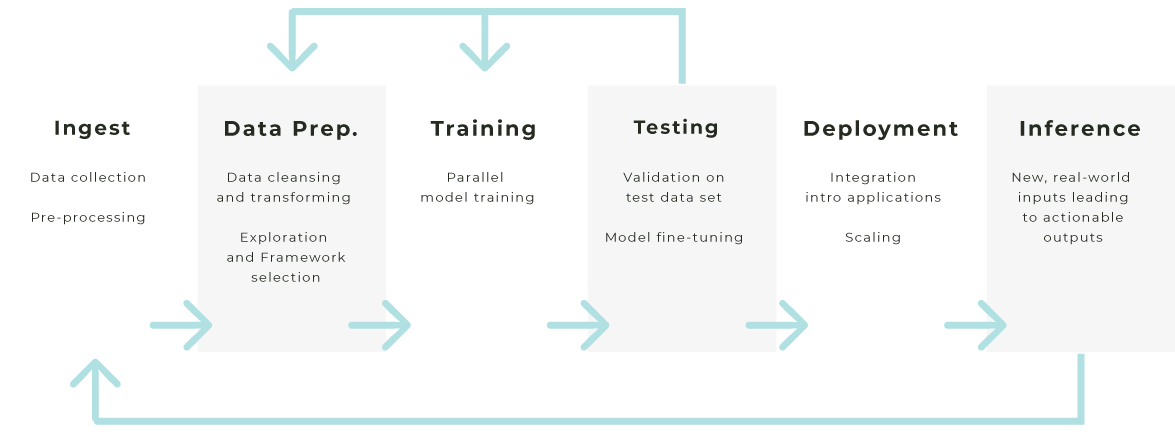
The AI
Journey
AI adoption framed by entrepreneurs
Through research and consultation with business partners and experts, we have developed a working draft of a practical framework for adopting AI curated by local entrepreneurs and businesses who’ve traversed the path and now offer their pain points and tips to help guide you.
At each phase of your AI adoption journey, ISAIC can offer support or uncover resources by various local and regional organizations and companies that can help you move your journey forward.
Phase 1
Understand what AI can and cannot do.
Artificial intelligence can create massive value across the value chain for every industry. Although it is a technology, it is important to understand its capabilities and boundaries so that your expectations can be met. The AI journey framework considers the value that AI technology adds to your business through a lens of "the four P's":

Produce
Operations with higher productivity, lower cost, and better efficiency.

Project
Enlightened R&D, real-time forecasting, and smart sourcing.

Promote
Products and services at the right price, with the right message, and to the right targets.

Provide
Enriched, tailored, and convenient user experience.
Phase 2
Define what problem you are trying to solve.
Defining what business problem you’re trying to solve or what process you’re trying to improve is a critical step in adopting a new AI product or service to your business. What does success look like, and how does it align with your business strategy? Putting together a business case and outlining why AI might be a potential solution to your customers’ problems will save you a lot of time and effort in the long run.
Phase 3
Identify data availability, accessibility, and management requirements
Without data, getting started with AI is impossible. For the problem you’re trying to solve, or the process you’re trying to improve, you should have an idea of what kind of data is required to develop your AI solution. Some key considerations at this step are asking yourselves questions regarding data availability, data accessibility, data storage and data management.
Phase 4
Identify the right use case
Once you have defined your problem and identified your data requirements, brainstorm to explore as many AI use cases as possible, then consider the business impact, data availability, technical feasibility, and potential ethical issues.
Phase 5
Adopt the right tools, mindset & partnerships.
To capture the full value of AI, companies need to build internal capabilities and partner with or acquire additional tools and capacity from startups, researchers, AI talent, support organizations, or leading AI firms. When choosing tools and technologies to enable AI, four principles that are critical for AI to flourish: Leverage Scale, Focus on functionality rather than technology, Embrace iteration in data projects, Collaborate internally & externally.
Phase 6
Execute & iterate your AI project.
The AI/ML training process is complex, interconnected and is cyclical in nature to improve the accuracy and precision of your model.
Ingest → Data Priming → Model Training → Evaluation → Deploying → Inference
AI DATA PIPELINE


Be prepared to spend the majority of your time in data pre-processing, cleaning, and manipulation, as it typically accounts for 60 - 80% of the time required to commission an AI/ML project.
Phase 7
Integrate AI insights into your business.
Once your company is capable of producing AI-powered insights, they must be integrated into existing processes or into a product to capture the benefits promised in the business case. Typically, this involves process redesign to incorporate AI insights into the workflow.

